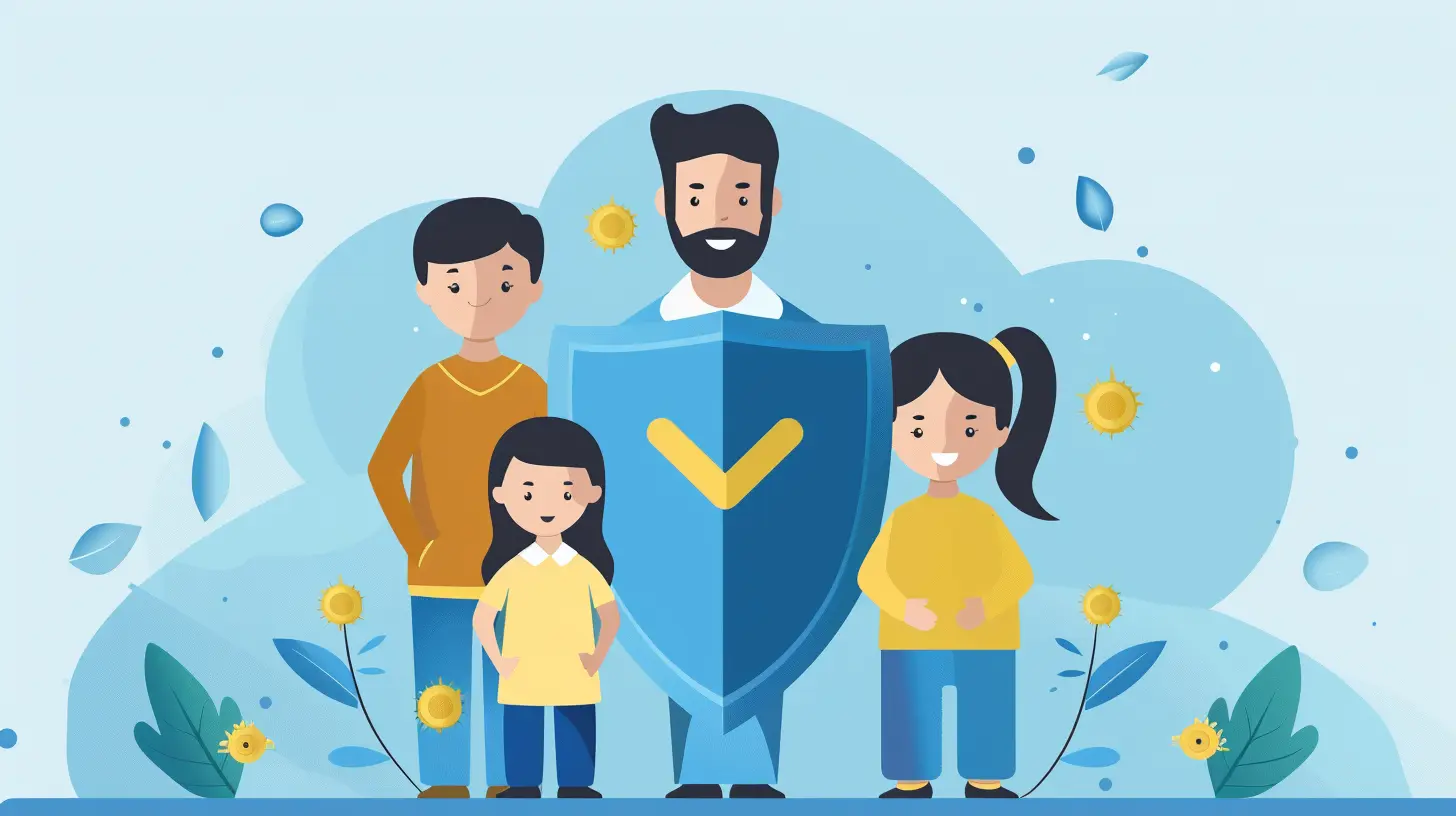Protecting Your Child’s Identity Online: A Parent's Guide
6 October 2025
The internet is a vast playground for kids today. From social media to gaming platforms, they’re more digitally connected than ever. But with all that freedom comes risk—especially when it comes to identity theft, privacy breaches, and online predators.
As a parent, your child’s safety is your top priority. That includes protecting their personal information online. But where do you even start? Don't worry—I’ve got you covered. In this guide, we’ll dive into the essential steps you can take to safeguard your child’s identity online.

Why Is Your Child’s Online Identity at Risk?
Your child may seem like an unlikely target for identity thieves, but here’s the kicker—they’re actually prime victims. Why? Because their credit histories are clean, and identity theft can go unnoticed for years until they apply for a loan or credit card as adults.Cybercriminals can misuse your kid’s personal details to:
- Open bank accounts or credit cards in their name.
- Apply for loans or government benefits.
- Gain access to private accounts like emails and social media.
- Commit fraud using their stolen identity.
Scary, right? But the good news is, with a few proactive steps, you can drastically reduce these risks.

1. Teach Your Kids About Online Privacy
Kids aren’t always aware of the consequences of sharing personal details online. That’s why a conversation about online privacy is crucial. Keep it simple and explain why they should never share personal information, such as:- Their full name
- Birthdate
- Address
- School name
- Phone number
- Social Security number
Make sure they understand—what seems like an innocent post or a fun online quiz could actually be a trap to collect their info.

2. Use Strong Passwords and Two-Factor Authentication
A weak password is like leaving your front door wide open for hackers. Here’s what you can do:- Create strong passwords: Use a mix of letters, numbers, and special characters. Avoid obvious choices like birthdays or pet names.
- Use a password manager: Let’s be real—remembering dozens of passwords is tough. A password manager can securely store and generate strong passwords.
- Turn on two-factor authentication (2FA): This adds an extra layer of protection. Even if someone cracks the password, they’ll still need a second form of verification to access the account.

3. Monitor Their Social Media Activity
Social media is where kids love to hang out—but it's also a goldmine for identity thieves. Take these steps to keep their profiles secure:- Make accounts private: Ensure only friends and family can see their posts.
- Limit personal info: Encourage them to avoid sharing their real name, location, or other identifiable details.
- Think before posting: Remind them that once something is online, it’s almost impossible to erase completely.
4. Be Cautious with Online Games and Apps
Online games and apps often ask for personal details—but not all of them are safe. Here’s how to protect your child while they play:- Only download apps from trusted sources (like official app stores).
- Read the privacy policies before signing up for an account.
- Disable location sharing to prevent apps from tracking their whereabouts.
- Educate them about in-game chats—many predators use gaming platforms to groom children.
5. Watch Out for Phishing Scams
Scammers are sneaky—they’ll disguise themselves as friends, teachers, or even legitimate companies to trick your child into revealing personal details.Teach your kids to:
- Avoid clicking on suspicious links in emails or messages.
- Never download attachments from unknown sources.
- Verify if an email or message is real by checking with you first.
One good rule of thumb? If something feels off, it probably is.
6. Set Up Parental Controls
Parental controls aren’t about spying—they’re about safeguarding. Most devices and browsers allow you to restrict what your child can access online.Here’s what you can do:
- Enable content filters to block inappropriate websites.
- Use screen time limits to manage their online activity.
- Monitor downloads to prevent them from installing unsafe apps.
Tools like Google Family Link, Apple’s Screen Time, and parental control software like Bark or Qustodio can help keep an eye on their online behavior.
7. Manage Their Digital Footprint
A digital footprint is like a tattoo—it stays with you. Every post, comment, or photo uploaded online builds a trail of information. Help your child maintain a clean digital presence by:- Googling their name to see what information is publicly available.
- Deleting old or unnecessary accounts they no longer use.
- Encouraging positive online behavior—what they post now can impact their future education or job opportunities.
8. Be Mindful of Public Wi-Fi
Public Wi-Fi is convenient, but it’s also a hacker’s playground. If your child connects to an unsecured network at a coffee shop or school, cybercriminals could steal their login credentials.To stay safe:
- Use a VPN (Virtual Private Network)—it encrypts their data and keeps hackers at bay.
- Avoid logging into personal accounts (like banking or email) on public Wi-Fi.
9. Regularly Check Their Credit Report
You might not think about checking your child’s credit report, but it’s a crucial step in preventing identity theft. You can request a report from major credit bureaus (Experian, Equifax, and TransUnion) to see if any fraudulent accounts exist under their name.If you find suspicious activity, report it immediately and consider freezing their credit to block future fraud attempts.
10. Lead by Example
At the end of the day, kids mimic what they see. If you're cautious about sharing personal information and practicing online safety, they’ll follow suit.- Be mindful of what you post about them—sharing details like birthdays or school names can expose them to risks.
- Discuss real-life examples of identity theft so they understand the consequences.
- Make cybersecurity a family habit—review safety practices together regularly.
Final Thoughts
Protecting your child’s identity online isn’t a one-time task—it’s an ongoing process. But by staying informed, having open conversations, and implementing security measures, you can create a safer digital space for your little one.The internet is an incredible tool, but like any tool, it requires responsible use. With the right precautions, you can give your child the freedom to explore the digital world while keeping their identity secure.
all images in this post were generated using AI tools
Category:
Online SafetyAuthor:

Austin Wilcox

